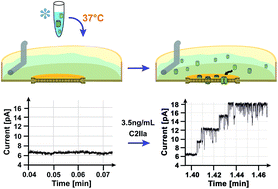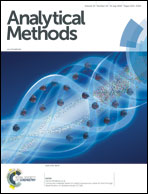Horizontal black lipid bilayer membranes for studying pore-forming toxins
Abstract
The investigation of pore-forming proteins such as the toxin component C2IIa from the binary Clostridium botulinum type C2 toxin is of particular interest for pharmaceutical applications, e.g., such as drug delivery into cells. Since this type of channel forming protein spontaneously incorporates into natural as well as artificial lipid bilayers, the examination of the transport properties is facilitated after organization within such membranes. Initially, a commercially available vertically oriented black lipid bilayer membrane (vBLM) system was utilized to fundamentally study the incorporation of C2IIa, and to investigate the current flow via these pores between two chambers filled with saline solution in a lipid bilayer workstation. The resulting current flow provided an estimate of the number of incorporated C2IIa pores. For future studies on the structural characteristics of the pores during and after incorporation, a horizontally oriented black lipid bilayer membrane (hBLM) system was developed providing top access to the membrane/pore assembly for future combination with, e.g., scanning probe microscopy techniques. Using this system, the concentration dependent incorporation of C2IIa was investigated, and the population density of C2IIa channels within the membrane was estimated. Furthermore, the suitability of the developed approach for combination with scanning electrochemical microscopy (SECM) was fundamentally demonstrated via recording electrode approach curves.



 Please wait while we load your content...
Please wait while we load your content...